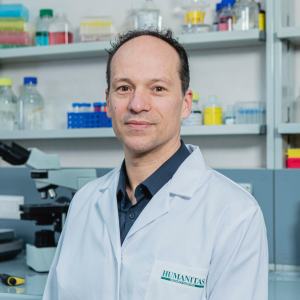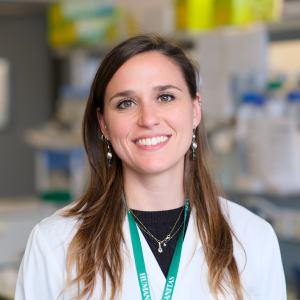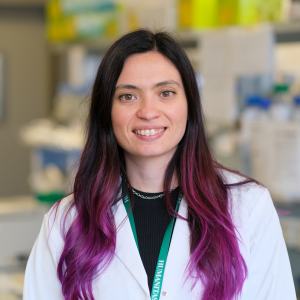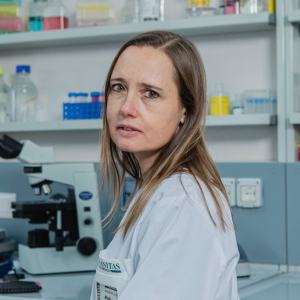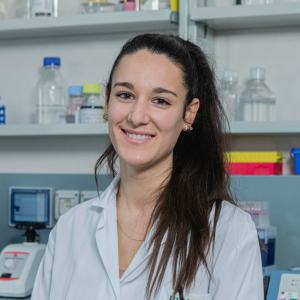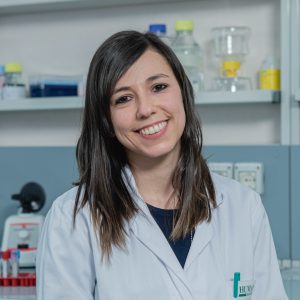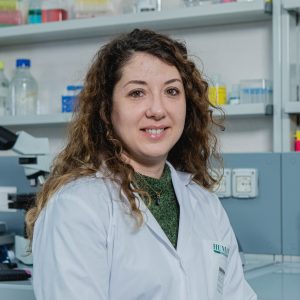Research Group
Catalucci Group
Signal Transduction in Cardiac Pathologies Lab
Our lab aims to dissect the molecular mechanisms underlying cardiac diseases to increase our knowledge on the organ functioning and to develop innovative and more effective approaches to treat the failing heart, such as nanodelivery of biologicals and personalized medicine.
The challenge
Many cardiac diseases are due to dysfunctions in the electrical signaling that coordinates heart cells contraction, such as heart rhythm disorders and heart failure, a chronic condition which is the clinical end-point of many cardiovascular disorders and one of the main causes of disability worldwide. We know already that calcium plays a key role in this electrical signaling and thus in regulating the pumping function of the heart. Since abnormal regulation of calcium is directly related to many heart diseases, a better understanding of the molecular mechanisms behind cardiac cells’ handling of calcium molecules will pave the way to new therapeutic solutions, that could take advantage of innovative precision-medicine and nanoparticles-based drug delivery systems.
Main research areas
Heart muscle contraction and calcium management
Characterizing the cross-talk between stressed cardiac and immunological cells has recently received attention. In recent years, we have gained a better understanding of the subcellular regulation of the L-Type Calcium Channel (LTCC) complex, which is a key trigging actor in the Calcium Induced Calcium Release mechanism in cardiac cells. We studied the altered intracellular LTCC trafficking in numerous acquired and genetically based cardiac diseases, as well as potential therapeutic interventions. A recent focus has been also dedicated to sepsis-induced cardiomyopathy, a recognized form of transient cardiac disorder occurring in patients affected by sepsis and associated to both excessive myocardial inflammation and calcium handling.
Biomimetic nanoparticle formulations for cardiac-specific drug delivery
The application of nanotechnology to medicine represents a revolutionary approach to successfully deliver therapeutics to specific cells and tissues in the body. Despite remarkable advances in the use of nanoparticles-driven delivery to fight cancer, there are very few studies reporting nanomedicine application in cardiovascular diseases (CVDs), even though it could help to overcome some of the limitations associated with current CVDs treatments. In our lab, we are studying innovative approaches to deliver therapeutics to the diseased heart via inhalation using biocompatible and biodegradable nanoparticles.
Selected publications
Antimicrobial peptides for tackling cystic fibrosis related bacterial infections: A review.
Mitochondrial a Kinase Anchor Proteins in Cardiovascular Health and Disease: A Review Article on Behalf of the Working Group on Cellular and Molecular Biology of the Heart of the Italian Society of Cardiology.
Modulation of LTCC Pathways by a Melusin Mimetic Increases Ventricular Contractility During LPS-Induced Cardiomyopathy.
Biocompatible antimicrobial colistin loaded calcium phosphate nanoparticles for the counteraction of biofilm formation in cystic fibrosis related infections.
Synthetic recovery of impulse propagation in myocardial infarction via silicon carbide semiconductive nanowires.
Nano-miR-133a Replacement Therapy Blunts Pressure Overload-Induced Heart Failure.
Cardio Ultraefficient nanoParticles for Inhalation of Drug prOducts: when CUPIDO hits the nano-revolution in cardiology.
The role of mitochondrial dynamics in cardiovascular diseases.
Optimization of In Vivo Studies by Combining Planar Dynamic and Tomographic Imaging: Workflow Evaluation on a Superparamagnetic Nanoparticles System.
Peptide-Based Targeting of the L-Type Calcium Channel Corrects the Loss-of-Function Phenotype of Two Novel Mutations of the CACNA1 Gene Associated With Brugada Syndrome.
Novel Basic Science Insights to Improve the Management of Heart Failure: Review of the Working Group on Cellular and Molecular Biology of the Heart of the Italian Society of Cardiology.
Disease modeling of a mutation in α-actinin 2 guides clinical therapy in hypertrophic cardiomyopathy.
Wnt signalling mediates miR-133a nuclear re-localization for the transcriptional control of Dnmt3b in cardiac cells.
Inhalation of peptide-loaded nanoparticles improves heart failure.
Content of mitochondrial calcium uniporter (MCU) in cardiomyocytes is regulated by microRNA-1 in physiologic and pathologic hypertrophy.
T cell costimulation blockade blunts pressure overload-induced heart failure.
Peptidomimetic Targeting of Cavβ2 Overcomes Dysregulation of the L-Type Calcium Channel Density and Recovers Cardiac Function.
Bioinspired negatively charged calcium phosphate nanocarriers for cardiac delivery of MicroRNAs.
Neutrophils promote Alzheimer’s disease-like pathology and cognitive decline via LFA-1 integrin.
MicroRNA-133 modulates the β1-adrenergic receptor transduction cascade.
Atrogin-1 deficiency promotes cardiomyopathy and premature death via impaired autophagy.
The circulating level of FABP3 is an indirect biomarker of microRNA-1.
APJ acts as a dual receptor in cardiac hypertrophy.
Group members
